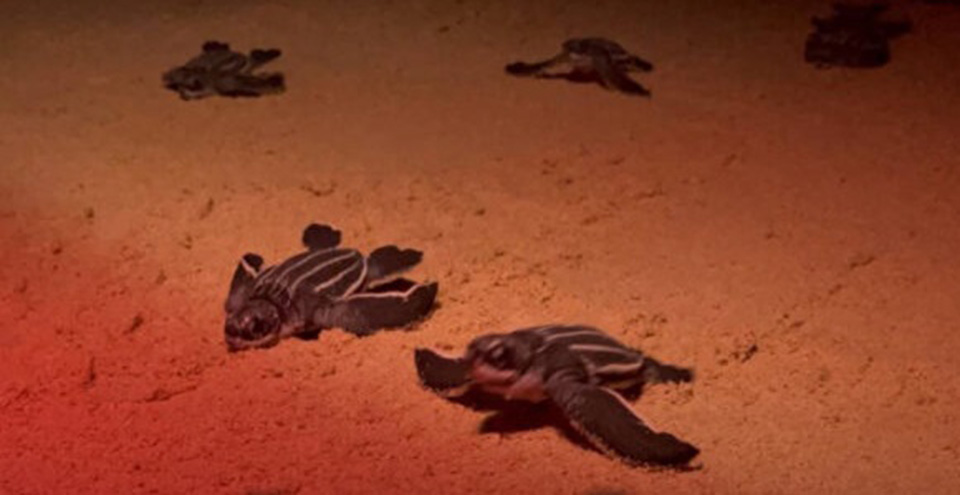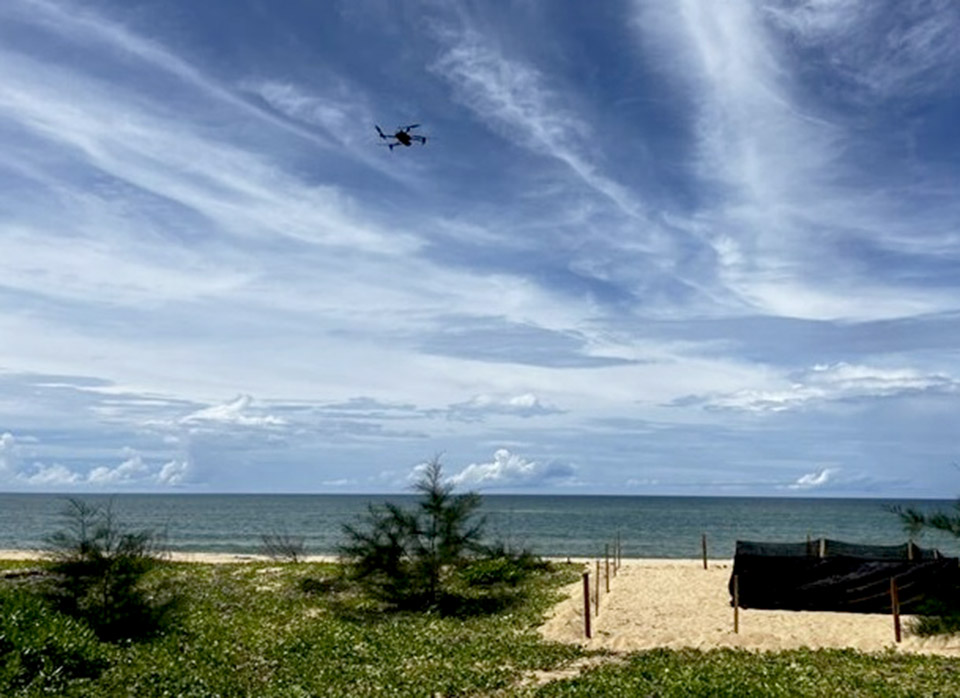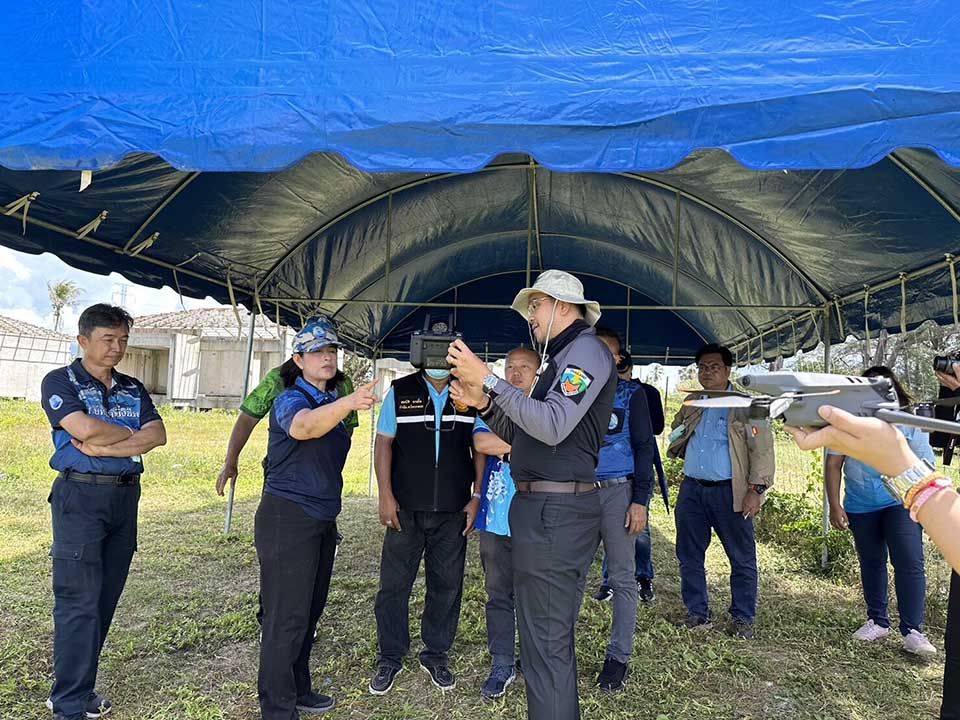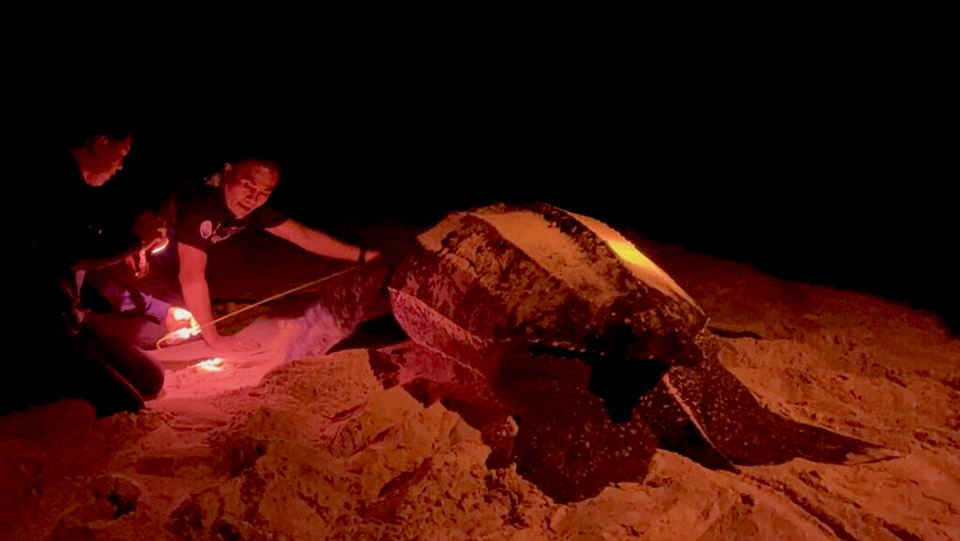
Footage of a leatherback sea turtle, the world’s largest turtle species, coming to shore to lay eggs was recently captured by thermal imaging equipment on a drone used by Thai marine observation officials.
The Department of Marine and Coastal Resources (DMCR) reported on its website that the turtle spotted last week had found its way to shore and dug a nest in the sand to lay her eggs, which will incubate for the next 55-60 days until hatching.
According to the department, a thermal drone can record more information than human researchers since its sensors can detect the body heat of warm-blooded creatures – or more specifically the thermal variances between animals and their surroundings – even in complete darkness. The technology is beneficial because it prevents noise and light from disturbing the turtles when they are nesting.
Leatherback sea turtles are classified as vulnerable on the International Union of Conservation of Nature (IUCN) Red List, with populations declining due to habitat loss, poaching, and plastic pollution. (NNT)



 |
 |
 |





